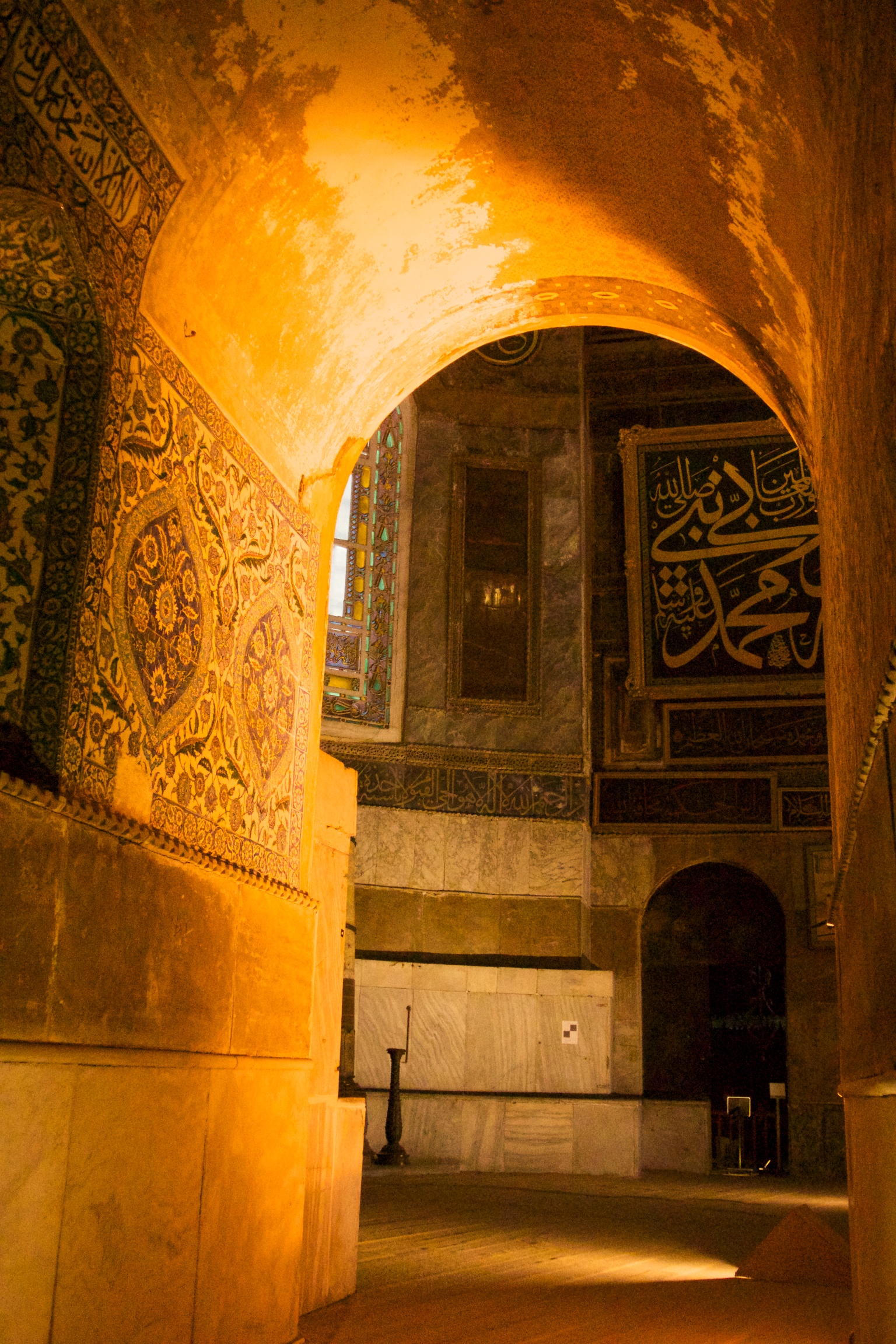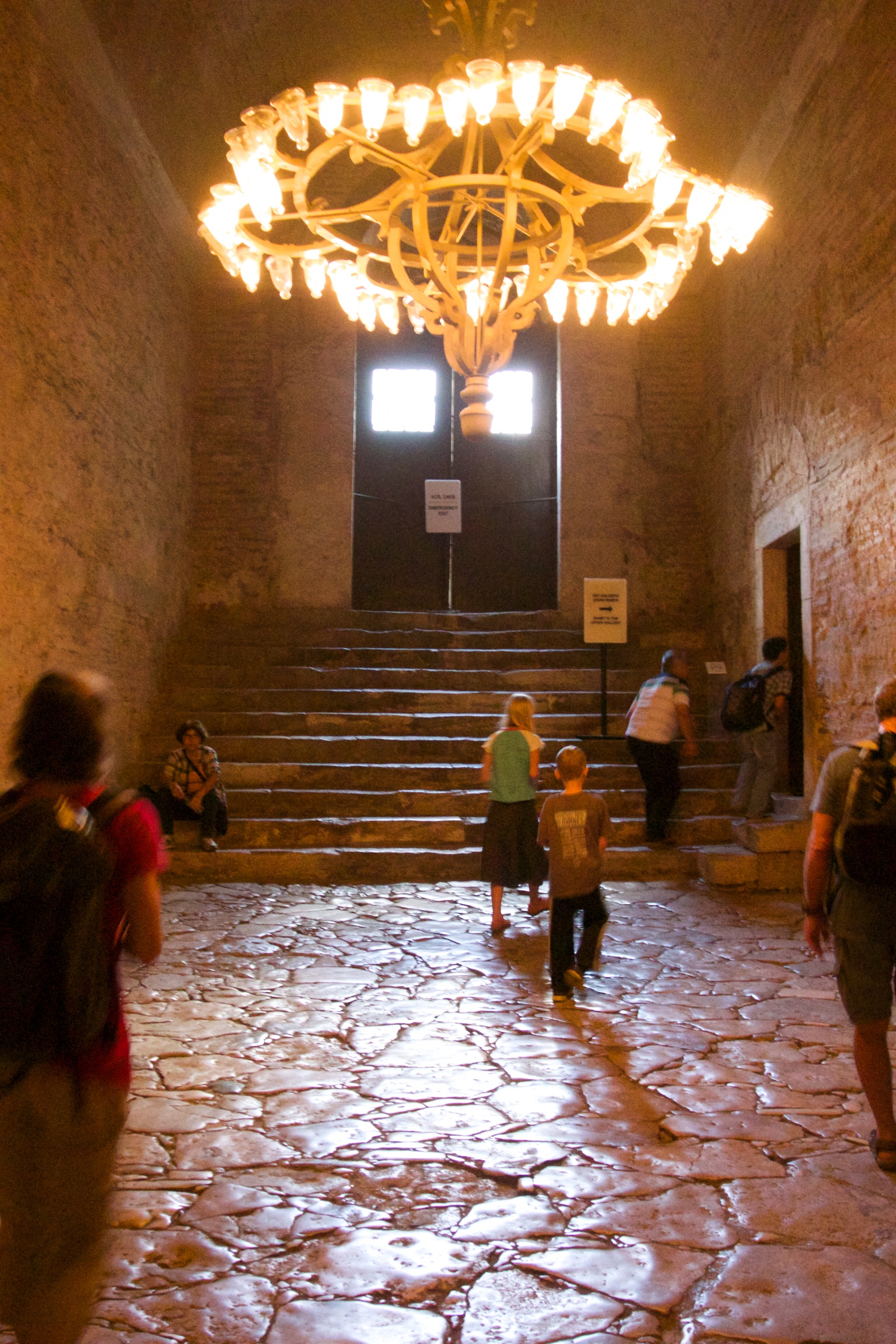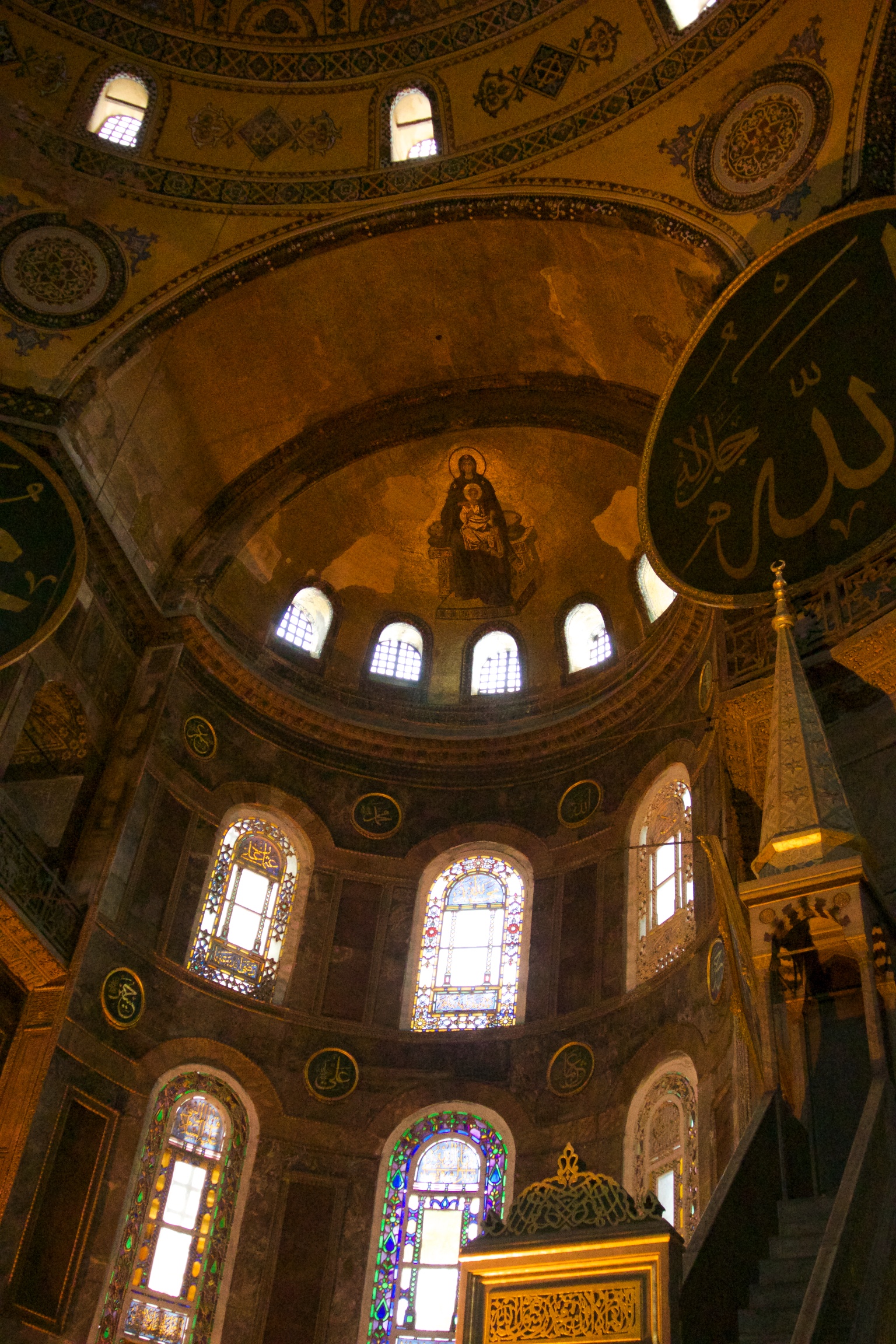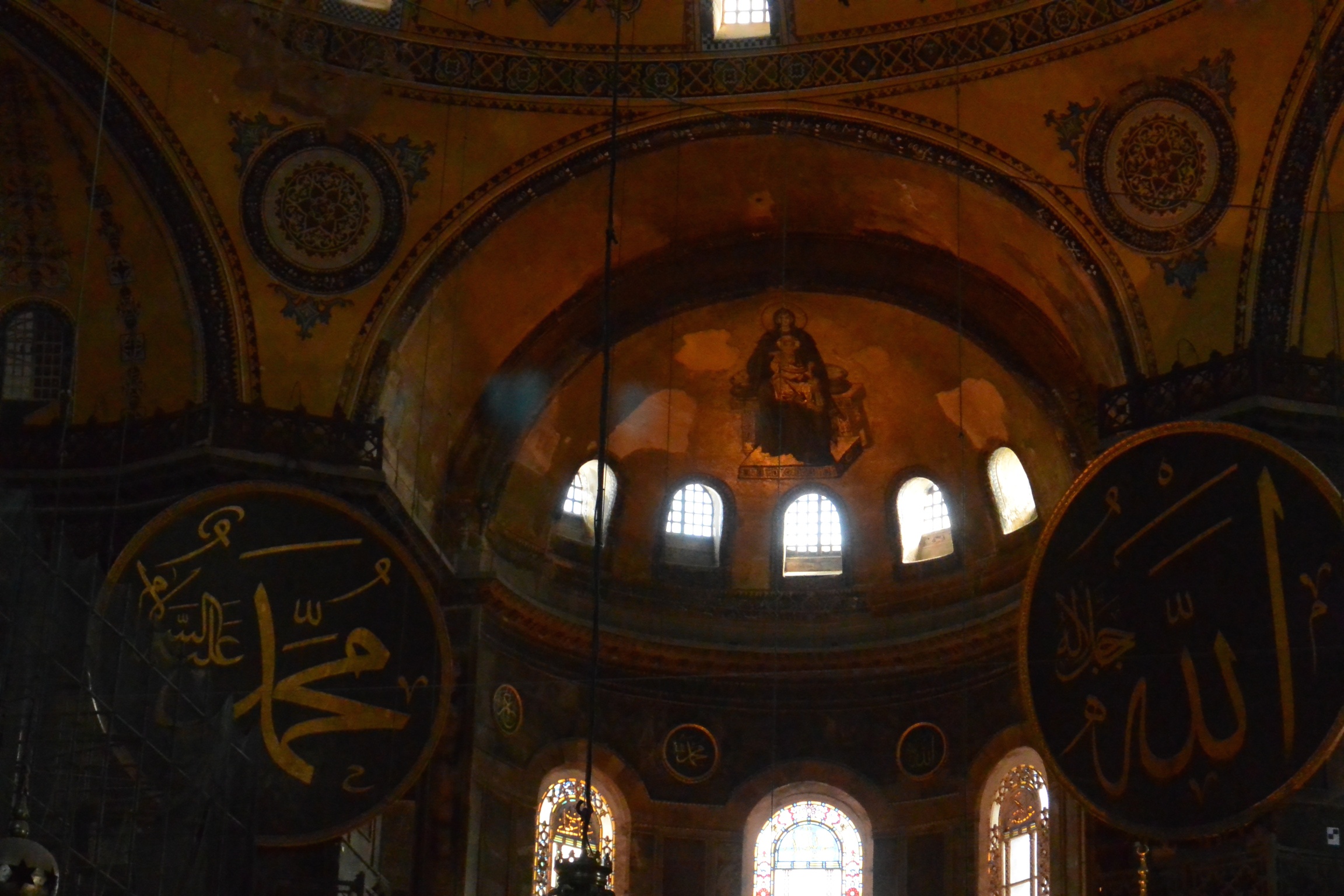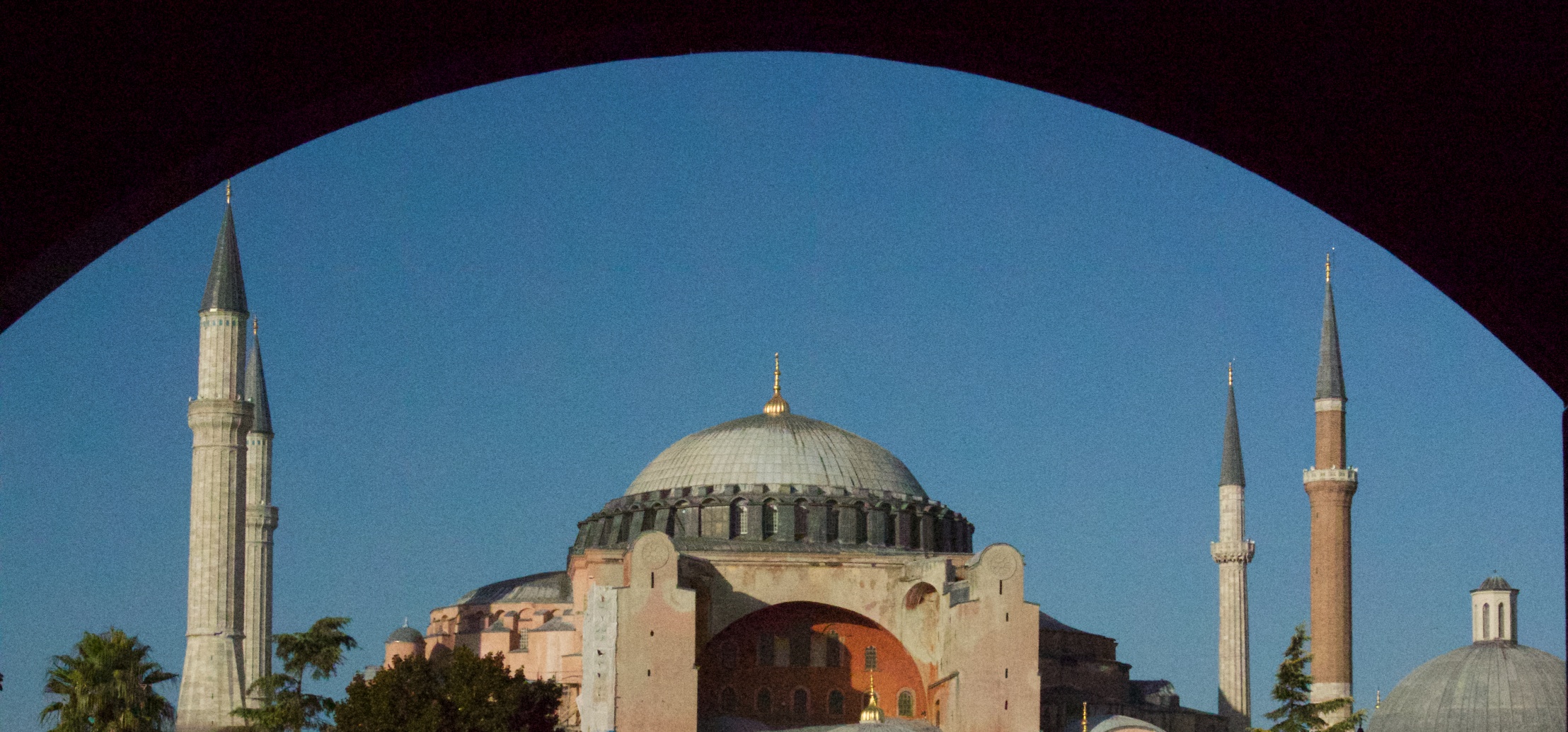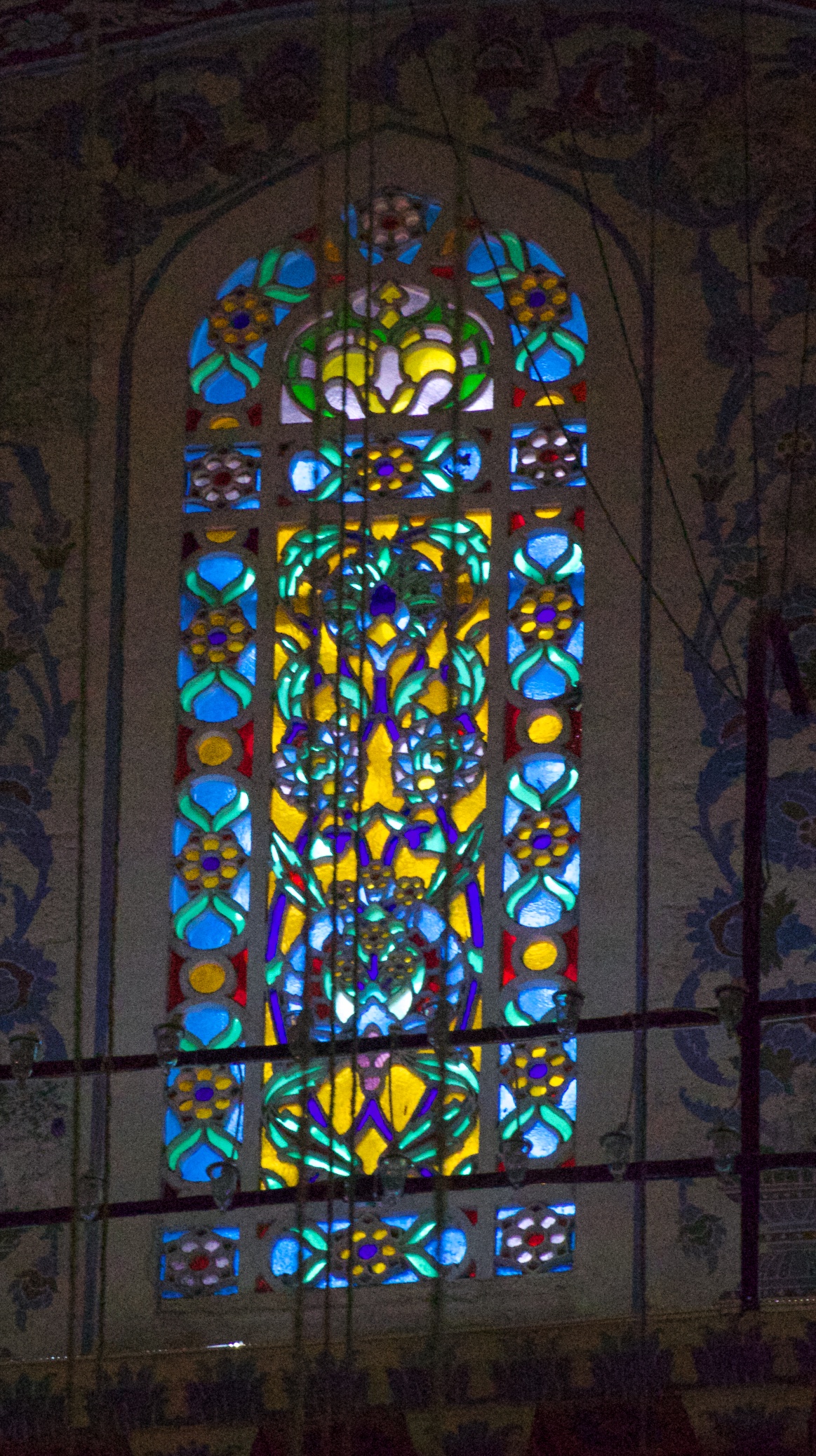Instantbulagram #2: the extreme renovation episode
In which we view two historically-significant and sacred tourist magnets in a desirable neighbourhood.
Aya Sofia
The Aya Sofia (nee Hagia Sophia) is a massive stone building that has undergone more radical changes than any house on the Home Renovation shows that my dad likes to watch.
It was originally built in Constantinople and consecrated as the Hagia Sophia church by the Byzantine Emperor Justinian in 537 AD. Subsequently, the building underwent further renovations by earthquakes, Crusaders and iconoclasts who favoured a minimalist ascetic/aesthetic -- each added their own peculiar touches to the layout and facade.
Then in 1534, the Ottoman Sultan Mehmet II purchased the building in a multiple-offer bidding war -- or more likely just a war -- and he undertook a major renovation to transmogrify it into a mosque. However, he left some of the original Christian mosaics due to its heritage-building designation.
His successor, Sultan Abdul Mecit 1, later oversaw some further upgrades -- you know, new cabinets in the kitchens, radiant floor heating, taking out the aluminum wiring, adding in some massive medallions with Koranic quotes -- in 1847.
Finally in 1935, the first leader of the Turkish Republic, Mustafa Kemal Attaturk, put a modernist, secular stamp on the building by declaring it a museum. Its current manifestation is a pleasing mix of Byzantine-Ottoman-Modernist with great windows, high ceiling, lots of tile, and close proximity to public transit. All quite a steal for just 30 TL to visit + 20 TL for the audio tour.
The Blue Mosque
Just across from the Aya Sofia on the other side of a massive water feature is the move-in-ready Blue Mosque (a.k.a the Sultan Ahmed Mosque), named after the thousands of blue Iznik tiles that adorn its inside.
Compared to its neighbour, it has a bit more curb appeal because it has not been subject to the redecoration whims of its previous owners. And it also has a more coherent interior-design motif: more of a non-representational, geometric pattern and Koranic calligraphy vibe.
Again there are lots of high ceilings, plenty of stain glass windows and full wall-to-wall carpeting -- please remove your shoes when you come by for a viewing.
Admission is free, but only between prayer times and to those who are appropriately dressed.









